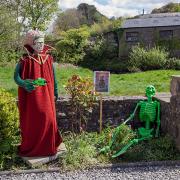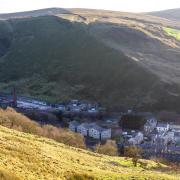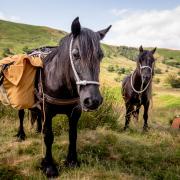At 107 hectares, Little Woolden Moss is the Lancashire Wildlife Trust’s biggest nature reserve, but it used to be so much more. This is a rare surviving example of a lowland raised peat bog, an important habitat that has seen losses of more than 98 per cent across the region.
Blanket bogs carpet so many of Lancashire’s moorlands, but this corner of the country also used to be peppered with lowland peat bogs which formed after the last Ice Age. Our lowland peat bogs provide an amazing habitat for lots of rare and specialised wildlife and, when they are healthy, are a huge carbon store, sequestering carbon from the atmosphere and actively fighting climate change.
But many of our lowland peat bogs have been drained, destroyed and used for agriculture or peat extraction.
Just 10 years ago Little Woolden Moss was a barren wasteland, or dry degraded peat, the after effects of commercial peat extraction for horticulture. Where once a peat bog stood, huge diggers rolled in, sliced devastating drainage channels, stripped the vegetation, and then dug the precious peat out of the ground, all to fill cheap bags of garden compost or grow potted plants.

Parts of Little Woolden Moss still bare those scars, with some areas of bare peat remaining. But restoration work on the north side of the reserve has returned the site to its former glory.
Squelchy sphagnum mosses carpet the ground in shades of acid green, burgundy red and deep umber. Bog pools reflect the enormous sky above, while in spring the fluffy white seed heads of cotton grasses bob and sway in the breeze.

At this time of year, the air is thick with dragonflies and damselflies. Butterflies and bees gorge themselves on the dusky pink heather, while majestic kestrels, merlins, hobbys and buzzards soar overhead. The reserve is also a haven for wading birds such as curlews, oystercatchers, dunlin, and little ringed plover. And if you visit just as dusk is falling you may even hear the eerie churring call of a nightjar.
Another real highlight of the reserve are the otherworldly sundews. These diminutive plants are in fact fearsome carnivores (well, if you are a midge). Growing low to the ground, the jewel red leaves of the sundew are fringed with tiny tendrils, each tipped with a droplet of sticky ‘dew’. As an unsuspecting insect lands on the leaf, they get stuck to the ‘dew’ and their fate is sealed as the leaf slowly curls up around them, releasing an enzyme which dissolves them into sundew dinner.

Lying just between Salford and Warrington, near to Irlam and Culcheth, Little Woolden Moss is probably the Trust’s most accessible peatland nature reserve, with a footpath running around three sides of the reserve from where visitors can admire the sweeping vista across the bog and see how the restoration works are advancing from the north side which is now fully vegetated, to the east side which still has work to do.
‘Living Sensory Bogs’ at the side of the path are designed to be touched, so roll up your sleeves and gently push your fingers into the sphagnum mosses, feeling their soggy softness. They also feature many of the other plants that can be found on the bog, such as heathers, cotton grasses and even some sundews. But be sure to stay on the footpath as the site is delicate and the ditches are deep.
Visitors can also sit and rest on the bog oak that lines to the path to the viewing area – which once included a bird hide that has succumbed to vandalism. This blackened tree trunk is about 8,000 years old and is one of the majestic trees that were preserved in the peat when it first formed.



























